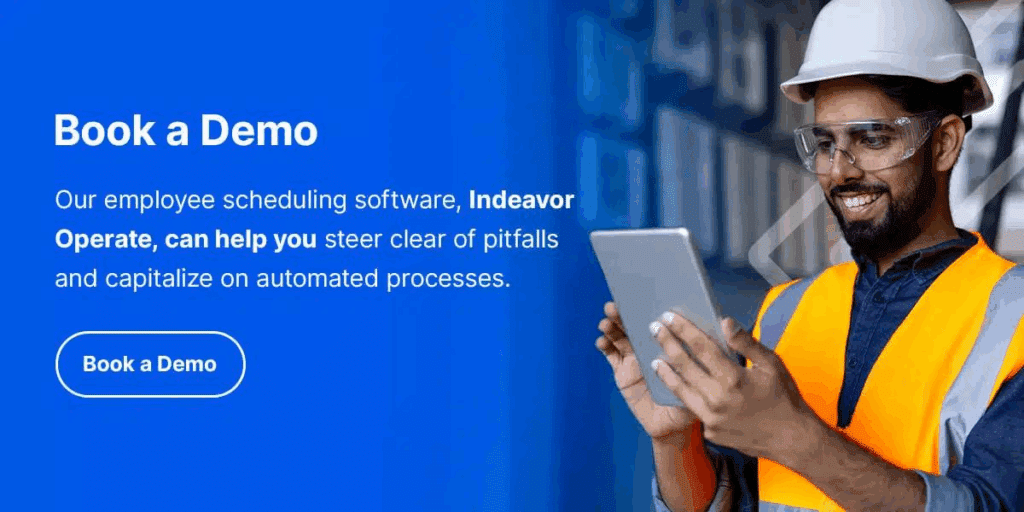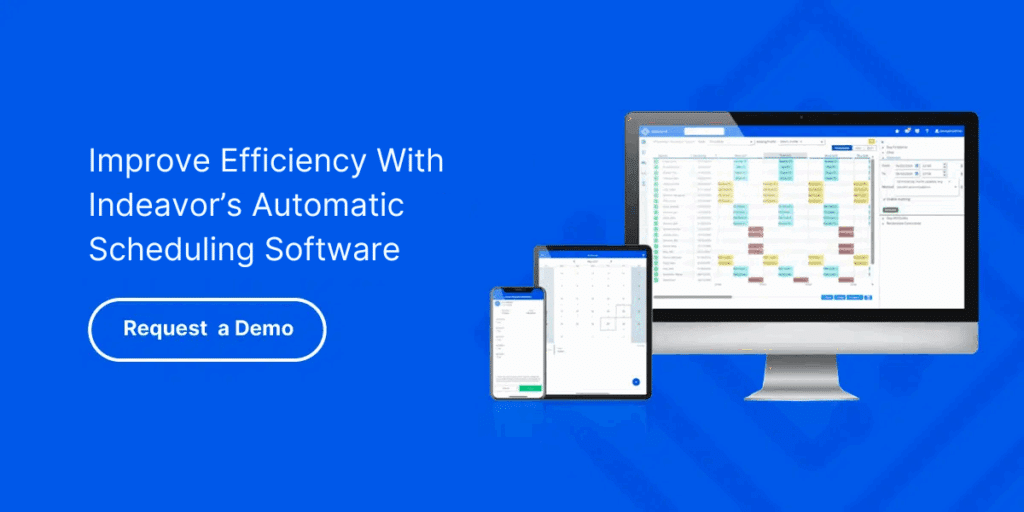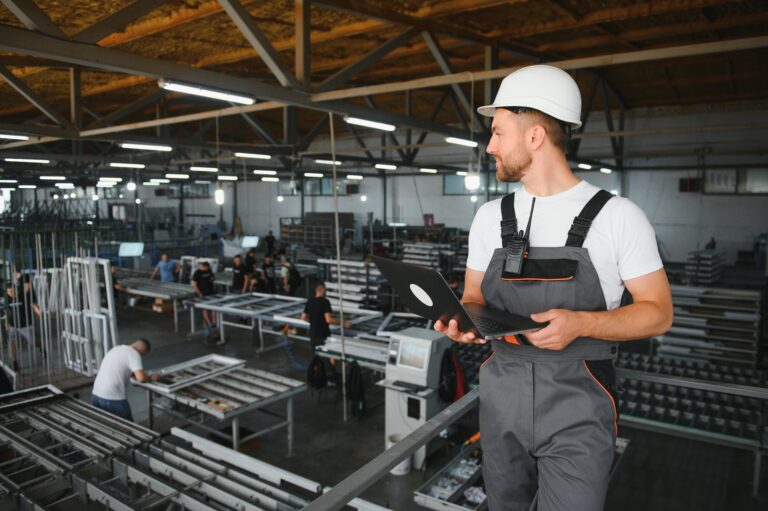As pressure mounts across the supply chain and the workforce continues to evolve, manufacturers are racing to keep pace. Legacy systems and outdated scheduling methods are no match for the dynamic, demand-driven realities of modern production. At the center of this shift lies a critical imperative: digital transformation in manufacturing.
But true transformation isn’t just about upgrading technology. It’s about aligning people, processes, and technology to work in harmony. Only by connecting these three pillars can manufacturers create agile operations, empowered workforces, and future-proof production systems.
In this article, we’ll explore what digital transformation in the manufacturing industry really means and how organizations can adopt a people-centric, process-optimized, and technology-integrated approach that delivers measurable results.
The Current Landscape of Digital Transformation in Manufacturing
The drivers of digital transformation in manufacturing are multifaceted. Global competition, supply chain disruptions, skilled labor shortages, and increasing regulatory scrutiny are all forcing manufacturers to modernize. Digital transformation is no longer a nice-to-have; it’s a strategic necessity.
According to McKinsey research, an estimated 90% of all organizations are currently undergoing some form of digital transformation. Manufacturers are realizing that a phased approach to digital maturity, starting with foundational data and workforce alignment, yields greater success than siloed, tech-first deployments.
Key Benefits
The advantages of digital transformation in manufacturing sector go beyond automation or system upgrades; they redefine how manufacturers manage complexity and scale operations. When implemented with purpose and clarity, digital transformation empowers manufacturers to move from reactive decision-making to predictive, data-driven strategies that reduce risk and enhance productivity.
Key benefits of digital transformation in manufacturing include:
- Increased labor efficiency through optimized scheduling and skills-based assignments
- Reduced operational costs by aligning labor with real-time production demand
- Enhanced compliance and audit readiness through automated rule enforcement
- Improved employee engagement via mobile access and self-service tools
- Greater visibility into labor performance and capacity with real-time analytics
- Scalable, integrated systems that future-proof operations and reduce IT burden
Ultimately, these outcomes combine to create a more agile, resilient organization. The manufacturers best positioned for long-term success will be those that treat digital transformation as a strategic alignment across people, processes, and technology—not just a technology upgrade.
Common Roadblocks
Despite the growing urgency, it can be difficult to execute successful digital transformation in manufacturing. Internal resistance, siloed initiatives, and misalignment between departments often stall progress before it gains traction. Without a clear roadmap and full cross-functional engagement, even the most advanced technologies can fail to deliver value.
Key barriers include:
- Resistance to change from frontline or management staff
- Poor integration between legacy systems and new platforms
- Lack of executive buy-in or clear ownership
- Inadequate training and change management support
- Misaligned goals between operations, HR, and IT
- Overemphasis on tech without workforce considerations
Overcoming these challenges to digital transformation in manufacturing requires more than software—it takes a strategic partner who understands the labor complexities specific to the manufacturing environment. Organizations that succeed do so by aligning technology initiatives with workforce realities and operational goals from the start.

Streamlining Processes in Manufacturing
Traditional workforce planning processes are slow and reactive, often relying on outdated spreadsheets or disconnected systems. This makes it nearly impossible to adapt labor plans in real time when production needs shift.
Successful digital transformation in manufacturing starts with workforce alignment. Your people need access to tools that reduce friction, improve scheduling, and provide visibility into their roles and expectations. That’s where a modern labor strategy becomes indispensable.
Compliance and Absence Management
Another pain point in manufacturing processes is absence management and compliance. Paper-based or disconnected processes expose organizations to risks ranging from safety violations to union grievances.
With increased regulatory scrutiny and labor shortages, failing to manage absences correctly can quickly spiral into staffing crises and operational delays. Digital transformation in manufacturing isn’t complete without automating these high-risk processes to ensure every shift is properly covered, every regulation met, and every employee treated fairly.
Indeavor automates absence handling and ensures compliance by embedding labor rules, union agreements, and regulatory requirements directly into the scheduling process. The result? Fewer violations, better audit readiness, and increased peace of mind for operational leaders.
Skills-Based Scheduling
Indeavor supports manufacturers in moving beyond generic staffing approaches. Skills-based scheduling also creates opportunities for continuous workforce development. Through skills mapping, organizations can ensure the right employees are scheduled at the right time, with the right qualifications.
By identifying skill gaps and aligning them with training initiatives, manufacturers can upskill employees more strategically, creating a pipeline of qualified talent ready to step into critical roles. As part of a broader digital transformation in manufacturing, this approach enhances agility and resilience while supporting long-term operational excellence.
By aligning scheduling with certifications, training requirements, and availability, manufacturers reduce overtime, avoid compliance violations, and improve engagement. This is especially critical in regulated environments where incorrect staffing can lead to production delays or audit failures.
Integrated Labor and Demand Planning
One of the most critical shifts is the integration of labor scheduling with production demand planning. Instead of planning labor in isolation, Indeavor enables workforce schedules to reflect actual production requirements. Leading to improved efficiency while reducing unnecessary labor costs.
Instead of planning labor in isolation, Indeavor enables workforce schedules to reflect actual production requirements, leading to improved efficiency while reducing unnecessary labor costs. This integration ensures that staffing decisions are directly tied to real-time production needs, minimizing delays and overages. By incorporating digital transformation in manufacturing, organizations can create a synchronized approach that improves resource utilization and supports more strategic decision-making.
Mobilizing the Frontline
Mobile scheduling capabilities are also transforming how shift workers engage with their schedules. Giving employees the autonomy to swap shifts, submit time-off requests, and manage availability empowers themto take ownership of their work-life balance—improving morale, reducing absenteeism, and fostering a stronger sense of accountability. At the same time, automation removes administrative overhead for supervisors and schedulers, allowing them to focus on higher-value tasks.
Indeavor’s mobile-first design ensures that digital transformation in manufacturing isn’t just another executive initiative, and instead is embraced on the plant floor. y meeting workers where they are, on their phones, organizations gain faster adoption, more accurate data, and a more engaged frontline workforce.

Leveraging Technology for Digital Transformation
One of the most common mistakes organizations make is treating technology as the solution—when it’s merely the enabler. For digital transformation in manufacturing to succeed, technology must be integrated thoughtfully and supported by the right people and processes.
Successful digital transformation in manufacturing depends on aligning technology investments with clear business objectives and workforce needs. Without this strategic approach, even the most advanced tools can fall short of delivering real value. Companies that prioritize collaboration between IT, operations, and frontline teams create a culture where technology enhances productivity and drives continuous improvement.
Cloud-Based, Scalable Solutions
Indeavor offers a scalable, cloud-based workforce management platform that integrates seamlessly with existing ERP, MES, HRIS, and payroll systems. Our robust API architecture ensures data flows across platforms, enabling end-to-end visibility and coordination.
This flexibility supports not just today’s needs, but tomorrow’s growth. Whether expanding to new sites or adapting to new regulatory landscapes, Indeavor’s platform adapts with you. As part of a broader digital transformation in manufacturing, this scalability ensures continuity across enterprise operations. It empowers organizations to standardize labor processes while remaining agile in the face of shifting business demands.
Real-Time Workforce Data
Transformation efforts are only as good as the data they generate and how that data is used. Indeavor delivers real-time workforce insights that support continuous improvement, from demand forecasting to capacity planning. By analyzing trends in overtime, absenteeism, and shift fulfillment, leaders can take action faster and more confidently, driving greater performance across the board.
Real-time data is the foundation of effective digital transformation in manufacturing. With access to accurate, up-to-the-minute workforce metrics, organizations can pivot quickly, reduce downtime, and make proactive decisions that align labor with operational goals. This level of insight transforms reactive management into strategic leadership.
The Indeavor Advantage
The digital transformation in manufacturing is no longer just about automation or the latest technology trends. It’s about building a connected ecosystem where your workforce, operations, and systems move in sync.
Our platform solves the operational scheduling challenges that legacy systems can’t. We eliminate inefficiencies, improve compliance, and empower your workforce—all while integrating with the systems you already rely on.
Strategic Advantages of Indeavor:
- Seamless integration with ERP, MES, HRIS, and payroll systems
- Centralized labor data that supports real-time decision-making
- Automated compliance with labor laws, union rules, and certifications
- Scalable architecture built for multi-site growth and global operations
- Mobile-first tools that drive workforce engagement and adoption
- Demand-aligned scheduling to optimize labor costs and productivity
Whether you’re looking to modernize a single site or orchestrate a multi-location strategy, Indeavor delivers the infrastructure and expertise to drive digital transformation in manufacturing. Ready to see how Indeavor can support your transformation? Take the next step toward operational excellence by scheduling a demo with out team of experts.
About the Author
Claire Pieper is the Digital Marketing Specialist for Indeavor. In her role, she specializes in crafting strategic and engaging content, ensuring that customers are well-informed. Claire is dedicated to enhancing the customer experience and optimizing the user journey through Indeavor’s solutions. To learn more or get in touch, connect with Claire on LinkedIn.



